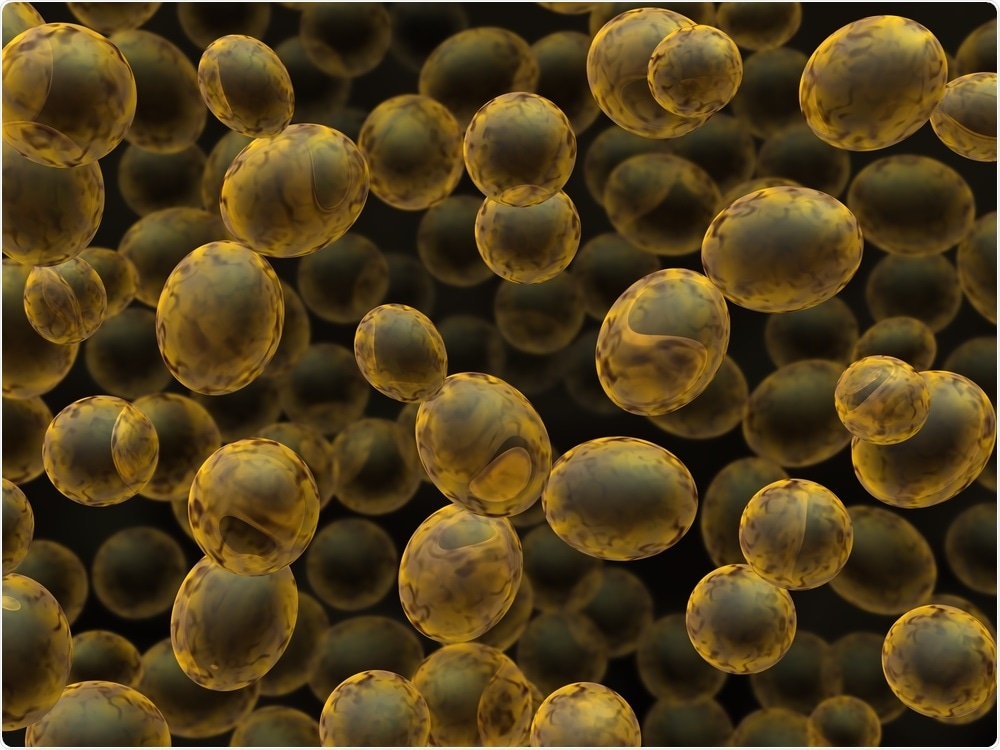Researchers at Vanderbilt University have discovered an ancient species of budding yeasts that have lost dozens of genes that protect against DNA mutation, without having suffered any adverse effects. The team says the species has thrived, despite accumulating thousands of mutations. The research may represent a new system for understanding how cells evolve in the absence of protective genes.
 Knorre | Shutterstock
Knorre | Shutterstock
Why is DNA repair important?
The genome can be altered when DNA polymerase enzymes accidentally introduce mutations during DNA replication or following exposure to environmental agents such as radiation and mutagenic chemicals.
If too many DNA changes are left uncorrected, cells can accumulate so many mutations that they no longer function properly. Furthermore, if too many mutations accumulate in germ cells, offspring can become unviable and unable to form properly. The repair of DNA mutations is therefore essential in all cells that are needed for organisms to function.
The relationship between DNA damage/repair and the development of cancer (carcinogenesis) became clear once scientists observed that cancer-causing agents or carcinogens alter the DNA sequence and are therefore mutagenic.
All of the carcinogenic effects seen in tumors are caused by the damage they inflict on DNA and the copying errors that are introduced while DNA repair enzymes attempt to fix the changes.
Cells are equipped with highly efficient mechanisms that enable them to correct DNA copying errors. Most organisms are armed with a host of genes that are dedicated to repairing DNA mutations, which helps to keep cell division in check, slow mutation rates and protect against cancer.
‘The yeast with the least’
It is widely believed that such highly conserved mechanisms are essential to life. However, a team led by Jacob Steenwyk (Vanderbilt University) has found that yeasts from the Hanseniaspora genus have lost many of the protective genes that would usually help other organisms stay free of cancer.
Interestingly, the yeasts, which are often found in grapes and grape must, have lost large numbers of the genes related to cell cycle and DNA repair, without suffering any ill effects.
As recently reported in the journal PLOS Biology, Steenwyk and team analysed the genomes of 25 25 Hanseniaspora species of budding yeasts and found that two lineages had lost hundreds of genes. The losses included dozens of genes that help regulate the cell cycle and perform DNA repair to preserve the integrity of the genome.
One lineage was faster-evolving than the other and while both had lost hundreds of the genes, the one that evolved faster had lost more. According to the authors, this resulted in it undergoing a burst of accelerated evolution that gave rise to increased mutational loads.
It appears that, in genomic terms, Hanseniaspora are the yeast with the least. They have very small genomes and among the smallest numbers of genes of any species in the lineage. These dramatic losses of so many genes are reflected in the biology of these yeasts."
Jacob Steenwyk, Lead Researcher
The loss of the genes is especially surprising because they have been so widely conserved in all living organisms and because the mutation of these genes in humans significantly increase the rates of mutation that lead to cancer developing.
“Because of their importance in ensuring genomic integrity, most genome-maintenance-associated processes are thought to be evolutionarily ancient and broadly conserved,” explain the authors. “Deletion of many of the genes associated with DNA maintenance leads to dramatic increases of mutation rates and gross genome instability.”
‘Genomic scars’ but no major adverse effects
Commenting on the speed of genome mutation, co-study author Antonis Rokas says the mutation rate is unprecedented, with cell division seeming to be remarkably fast and also somewhat erratic – “a quantity-over-quality approach, so to speak.”
The loss of genes and resulting changes in these yeasts genomes, has meant they bear “genomic scars,” both from exposure to natural mutagens such as oxidative stress and external mutagenic agents such as UV radiation.
Wayne Crismani from St Vincent’s Institute of Medical Research, in Melbourne, Australia, says the findings shed light on the degree to which an organism can survive despite the absence of protective genetic material.
These species of yeast have lost a large selection of some of the most fundamentally important types of genes that typically are used to keep the organism’s DNA intact for survival and propagation.”
Simon Conn from Flinders University, Australia, says that in humans, the loss of just one of these genes can be a hallmark for cancer, with some of the most commonly identified mutations in oncogenes being involved in DNA repair and cell cycle checkpoint pathways.
These mutations can trigger increasing rates of additional mutations and rapid tumor growth, enabling cancer to survive in the body and become resistant to chemotherapy drugs, he adds: “The similarities between the growth and mutation profiles seen in this yeast, albeit over millions of years, and that of human cancers is striking.”
Conn says the discovery could one day help in the development of new therapies for targeting DNA repair and Crismani thinks they may be helpful for increasing genetic diversity rates in yeasts that are used for baking and brewing.
However, the most important finding is that the Hanseniaspora genus has not suffered any adverse effects as a result of losing the protective genes. The team says the genus has continued to diversify and thrive, despite lacking the highly conserved genes and that it could provide a novel system for studying cellular life without them.
We're excited to continue studying Hanseniaspora yeasts. There's a lot we can learn about life's basic processes from these humble yeasts.”
Journal Reference:
Steenwyk, J., et al. (2019). Extensive loss of cell-cycle and DNA repair genes in an ancient lineage of bipolar budding yeasts. PLoS Biology. doi.org/10.1371/journal.pbio.3000255.